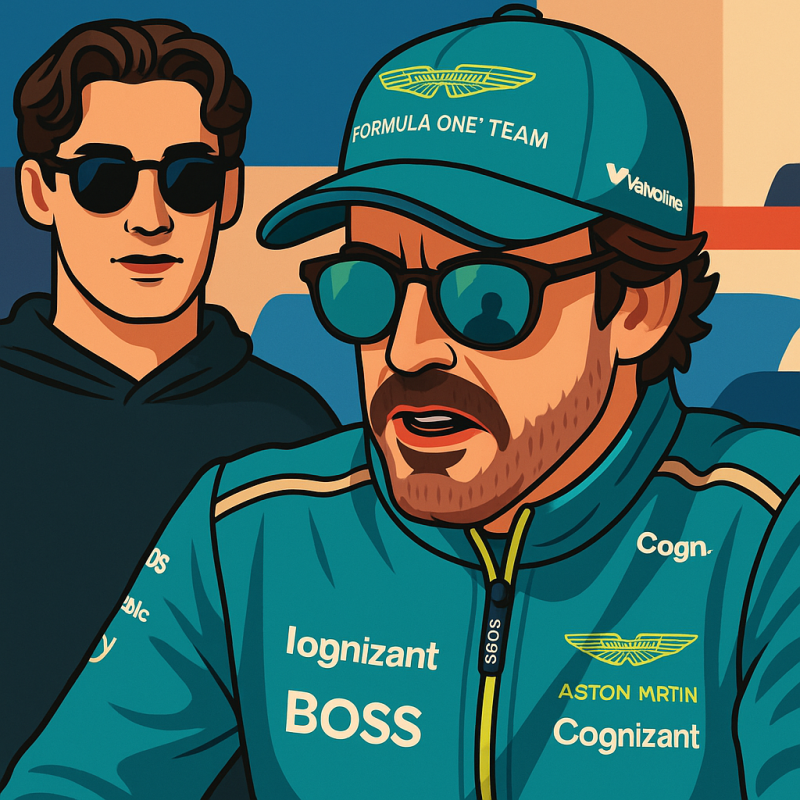Alonso warns over “recharge” pace delta after Russell near-miss earns Mercedes fine
Formula 1 came out of its summer shutdown with its elbows out at Zandvoort — and the tensest moment of FP3 involved two of the sharpest operators on the grid. Fernando Alonso was nearly pinched into the pit wall by George Russell in the final seconds of practice, a close call that later brought a €7,500 fine for Mercedes and a warning for Russell.
The sequence was classic Zandvoort. Alonso was winding up for a last push and tucked in behind Russell’s Mercedes, seemingly hunting a whiff of tow down the run to the banked final corner. As the pair swept toward the pit entry, Russell drifted right as if committing to peel in. Alonso was already alongside. For a beat, it looked ugly. No contact, but enough alarm for the Aston Martin to abandon the lap and dive into the pits.
“They don’t look in their mirrors,” Alonso snapped on the radio. After qualifying, his tone was cooler but the point remained. “It was an unfortunate moment in time, and I think the team didn’t inform him that I was coming,” he said. “The difference in speed on these recharging laps is always a concern for all drivers.”
That difference — cars trundling slowly to harvest energy versus others at full chat — is the sport’s tricky, modern reality. It’s especially hazardous at Zandvoort, where Turn 14 is blind and the pit entry tempts drivers into that late, rightward movement. The stewards sided with Alonso’s reading of events. In their report, they concluded Mercedes hadn’t warned Russell that a flying car was arriving and that “merely looking at the mirrors would not have prevented what occurred,” given the corner’s nature. The team’s failure “created a dangerous situation,” they wrote, fining Mercedes and issuing Russell a warning. Even so, they noted he could’ve stayed further right while moving slowly to leave space for quicker cars.
It capped a scruffy buildup to quali as the paddock shook off its vacation legs. Lewis Hamilton looped his Ferrari multiple times across the sessions, Lance Stroll hit the barriers twice — ending both FP2 and his qualifying early — and the pit lane had its own hair-raising vignette when Oscar Piastri swerved back into the slow lane to clear room for Lando Norris, leaving George Russell to thread the needle on exit.
For Russell and Alonso, the paperwork didn’t linger. Both returned to the garage and reloaded for qualifying, where Russell stuck his Mercedes in fifth and Alonso hauled the Aston Martin to 10th. Up front, it was Oscar Piastri who sprung the surprise on McLaren team-mate Norris for pole, the Australian’s lap dropping the curtain on a messy afternoon for several of the usual suspects.
Back to the flashpoint, though. If there’s a lesson, it isn’t new: traffic management has become a strategic art form. Teams live and die by their drivers’ track position, energy states, and gaps; radio warnings are as important as front wings. That’s amplified at circuits like Zandvoort where the rhythm compresses and blind apexes punish hesitation. One slow car on a recharge can be 150 km/h slower than a flyer. Mix in a late pit-entry feint and the margins evaporate.
The FIA has leaned on teams to own this more firmly — hence the fine landing on the pit wall rather than a grid drop for the driver. It’s the right direction. Drivers can leave a bit more margin, sure, but the best fix is on the pit perch: crisp calls, crystal timing, and no ambiguity on whether your man is boxing or staying out. As Alonso hinted, the delta problem won’t go away; managing it better will.
There’s also the human bit. Russell’s not a mirror-gazer by reputation, and Alonso’s not usually in the business of giving free tows. Both read the moment, both avoided contact, and both moved straight on to the next job. No drama on Saturday night — just a fine, a warning, and a grid that leaves plenty to play for on Sunday.
The championship heads into the final 10-race run with the stakes rising and patience thinning. Zandvoort already reminded everyone what the margins look like when the field compresses: chaotic, unforgiving, and one radio call away from headlines.




